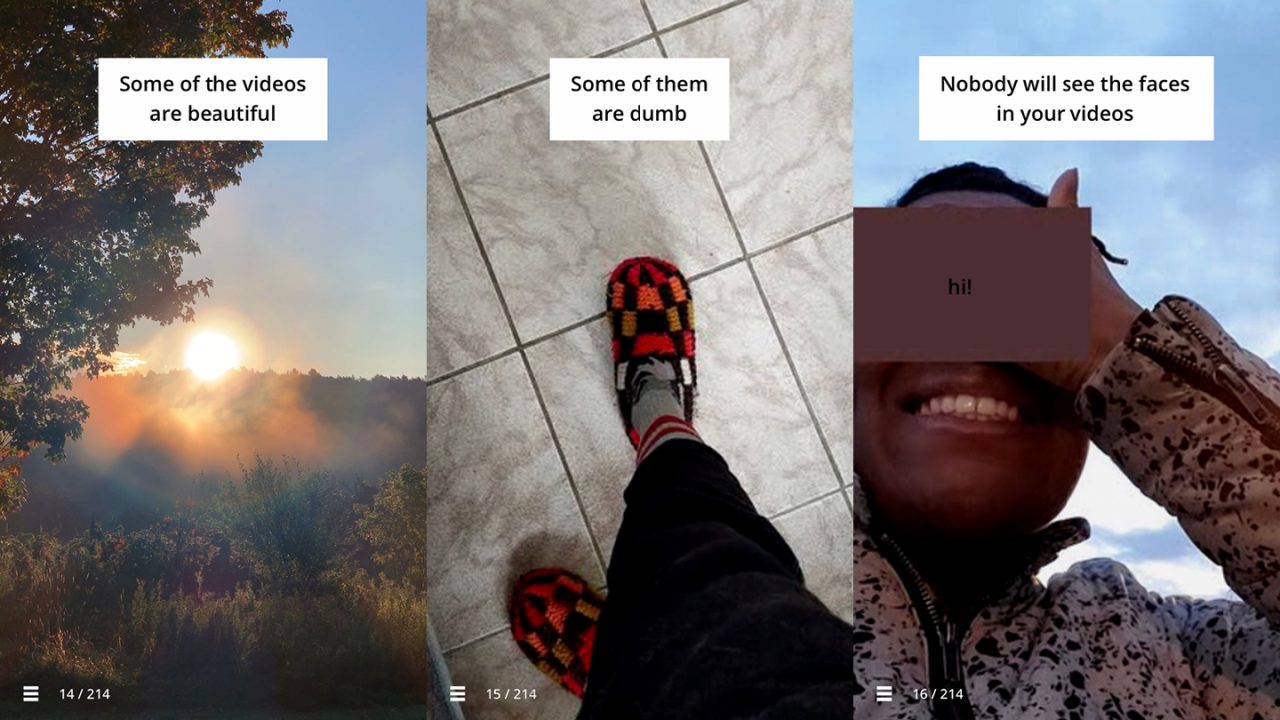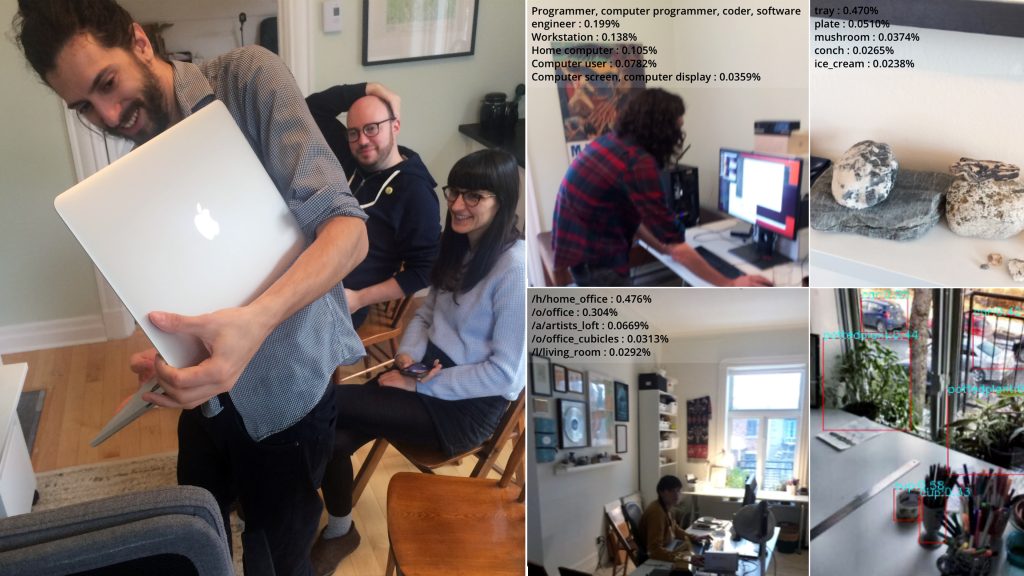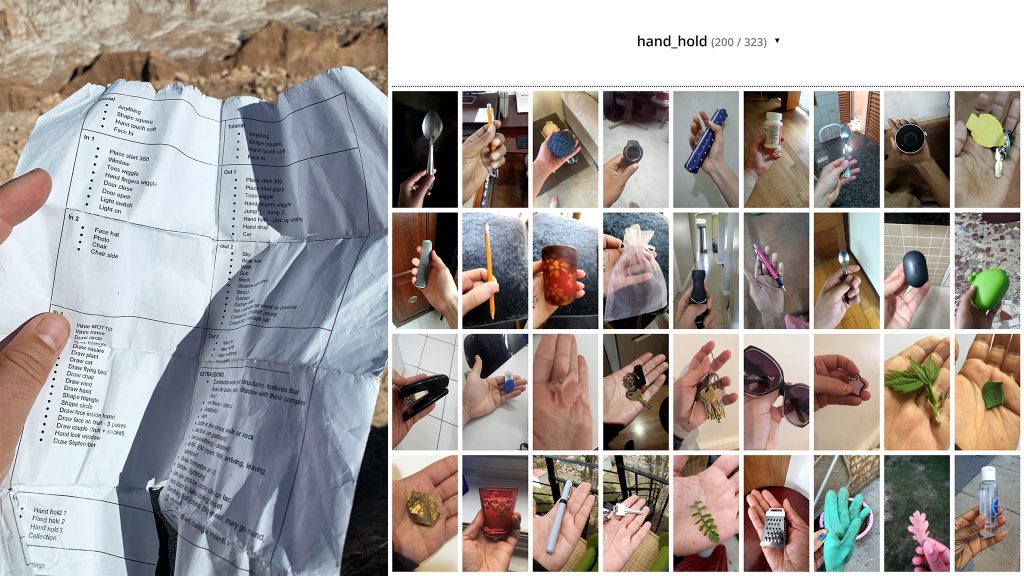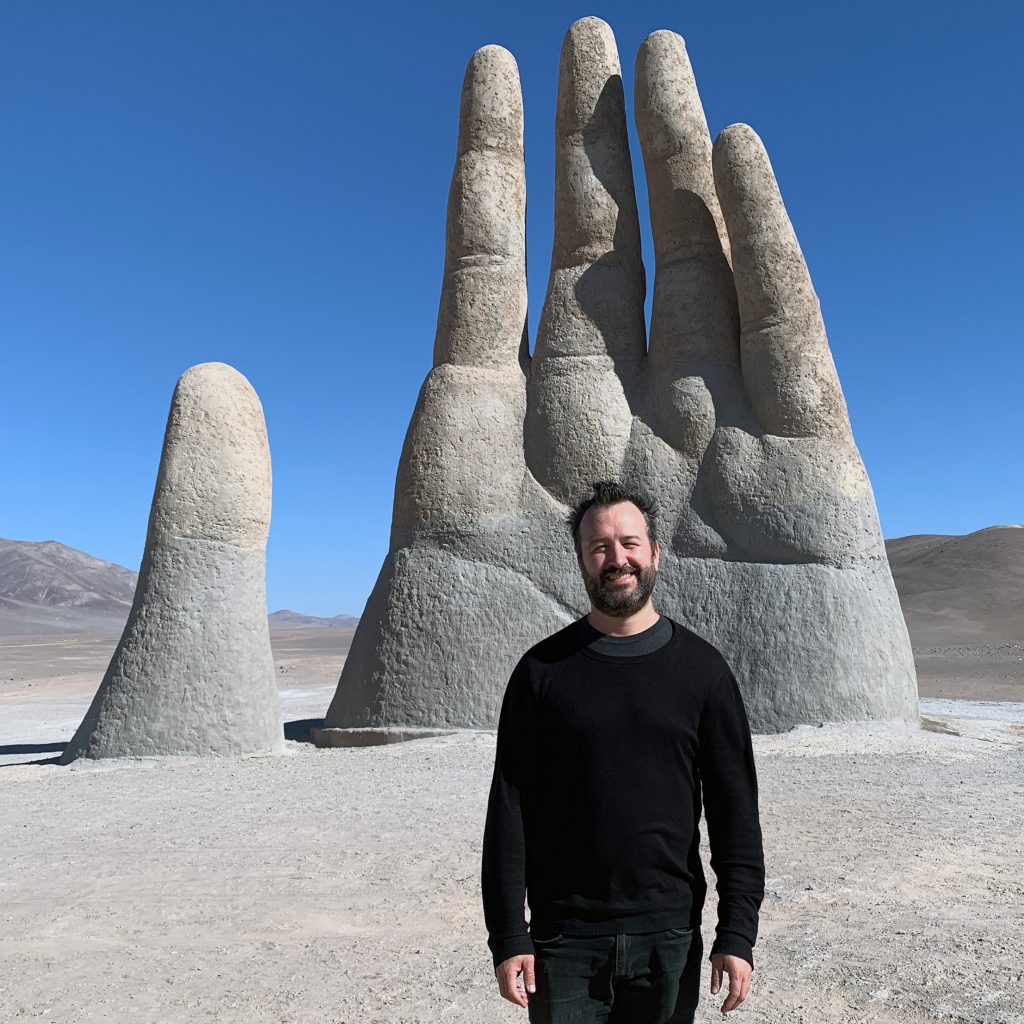
Motto: Making Magic and Sharing Secrets
Motto: Making Magic and Sharing Secrets
In April 2018, my friend Vincent Morisset wrote me an e-mail about a project he had begun working on with the NFB. “The idea is to do some kind of collective filming. But instead of sending cameras, we use people’s phones,” he wrote. “Some sort of treasure hunt meets in-camera DIY filming meets artificial intelligence and scripted stuff… I would be curious to know what you thought of it.”
I am not a filmmaker. I don’t know AI. But I had known and admired Vincent for years (we had even collaborated on a few small things) and what I was certain of was that I wanted to experience anything he was working on—wanted to set it free in my imagination. So one day I biked over and met him at Montreal-based AATOAA’s little studio, above where he lives with the brilliant artist Caroline Robert. The programmer Édouard Lanctôt-Benoit was there too, under his majestic kudzu of black hair. Meeting with this trio is like meeting with a group of acrobats, or a band of thieves: you have the feeling you’re outmatched. That you could so easily be undone.

Ed, Caro and Vincent had been working for a year on something they were already calling Motto—a “participative quest” about “our ability to create meaning.”
“I had a desire to create something that had a narrative and that was at the border between documentary and found art,” Vincent recalled last week. “I knew we were at a point where [AATOAA] could take on something more ambitious, more complicated, outside of our comfort zone.” Already, members of the interactive studio had made things that staggered me: the pioneering “film for computer” BLA BLA, Just a Reflektor and Neon Bible for Arcade Fire, the VR project Way To Go and even Vincent’s concert film INNI. But with Motto they seemed to be imagining something at once smaller and more expansive. Could you use people’s smartphones to help them to see the world differently? Could the solitary experience of shooting video on a mobile device somehow make you feel connected to other people, instead of alone? In the summer of 2018, there was no way to predict how timely—and even essential—those questions might become. Writing about Motto now, mid-COVID-19 pandemic, “virtual” connectedness seems like a public utility, something so many of us are trying to draw upon.
“When it comes to interactive projects, without having finished them, seeing them in their entirety, living them, we can’t know what they’ll turn out to be,” Édouard told me recently. “We have to work this way—iterating, building from one success to another.” With each project, AATOAA’s approach is to ask, “What has no one really done before, or what have they done but not really well?”
In this case, they had been experimenting with video capture—asking people to record tiny, unvarnished clips—then playing them back in altered contexts or as part of a larger montage. As apps like Vine or Snapchat had shown, it’s fun to record miniature videos. Machine learning and computer vision seemed to have an untapped potential, too: Could AI somehow sew users’ tiny clips together, analyzing them, manipulating them, modifying the context? Ed began a long cycle of developing AI tools for video analysis—software that could identify shapes or link gestures. Besides Motto‘s face-masking technology, little of this made it into the final project. But at the same time, this line of inquiry—thinking about shapes and patterns, (mis)recognition and anthropomorphism—fed and suffused the work that followed. Sure, it turned out that actual human beings were better at the “montage intelligent” that scaffolds this experience. But computers, with all their failings, can help us reflect on the way those human beings see.
Thus far, Vincent’s team had been experimenting with form—what using Motto might be like—but they still didn’t know what kind of story it could contain. The project was neither fish nor fowl—they imagined a collection of short stories, or a podcast-like series of unconnected episodes. Maybe one that was focused on colour, or gravity, or the repetition of shapes. However, Vincent had the intuition that this could go deeper. The video snapshots people captured, even at their most raw and everyday, had a peculiar mystique. They seemed memory-like, or symbolic. Repeated clips seemed like a refrain.
So in the summer of 2018, I joined the gang. Vincent gave me a key to the front door. I felt like I had been recruited into a secret order. Immediately I reviewed all the sketches the others had made—storylines attempted and aborted, experiments in tone and voice. “Recurring themes work great,” I observed in my notes. “Quick montages work well. / I like [this one’s] tone of sass and joy.” I recognized the way Motto‘s juxtapositions could truly surprise you, or how freely the narrator could change the subject. “First person works well here. / It’s OK to pause for a sec and tell an anecdote.”

I decided that if Motto was really going to go someplace—if we wanted the viewer to feel and experience something across its entire length—then its story would have to have a beginning, middle and end. It couldn’t just be random morsels in a random order; with its playful tone, Motto would end up feeling like popcorn. But if there was a single, extended storyline, who was it about? Why didn’t we ever see them on screen? Why was this a collection of other people’s videos?
Because they were memories, I decided. Because the protagonist of this story had gone away.
“My friend is a ghost,” I typed. “They can walk through walls. Their name is September.”
I wrote what became Motto‘s Chapter 1 as nothing more than an idea, a proposal. But as soon as I had typed the last lines and shown it to the others, as soon as Caro plugged it into the system, adding the most preliminary of images—it worked. It was obvious it worked. “Right away, this kind of eureka,” Vincent said. And Caro: “I had all these images I had collected but they were just in my head, possible associations, not necessarily an obvious logic—as soon as I had your text it all fit in so naturally.”
After months of fucking with the form, the dawning of story—of a narrator and their departed friend, of forward development and pacing and a consistent voice—brought Motto into focus, I think. These scattered, semi-random videos could be subtext as well as text: a playground for bathos, irony, and the Kuleshov effect. Whereas originally, Motto‘s story “was just the story of what the user was capturing,” as Caro put it, “we realized that we could bring people somewhere else.”
“There were still miles of challenges and obstacles,” Vincent said, “figuring out how humans react, making sure it works everywhere every time, that puzzle. But once we found the story it felt really quick and reassuring. This will work.” One chapter eventually became two, then three and four—often doubled-up, with different play experiences depending on whether the user is inside or outside. Since French made it difficult to describe September with neutral gender, we decided it would be randomly assigned—50 percent of users would encounter a male-identified ghost, 50 percent female. At all times our progress felt collective—my text informed by Caro’s visuals or Vincent’s vision, or the latest whiz-pow tech that Ed had figured out how to integrate, and in turn their work informed by my words. We found that hands were fascinating to look at (“So let’s incorporate more hands!”) or shadows or drawings or beautiful garbage. An idle conversation about narrative—about how to spin a yarn or surprise the user—became a brainwave about a massive hand in the Chilean desert (see photo); six months later, Vincent would be on a plane to Santiago.

This kind of magic is rare; I’ve made enough art, now, to know how rare. It mixes a feeling of ease with a feeling of undoing knots, the threads coming free in your hands. Sometimes we had to make things before we could understand them; sometimes we had to break things. Working like this, in a new form, the pleasure was how easily we could make or break rules, playing toward or against expectations. And then the tiny epiphanies, too: driving to Ottawa to find a horse skeleton; seeing September’s face in a 3400-year-old sculpture; realizing we could take users into the interior of a ghost’s mind.
And now, with Motto out in the world, the pleasure is again redoubled. Every user who experiences Motto—reading the story, contributing their clips—nourishes its archive of material: the library of wiggling toes and ravishing trash, “things that are soft” and “things that are square.” Motto is already much bigger than us, as it was always meant to be: like the world out there, it exceeds us, ever-changing.



